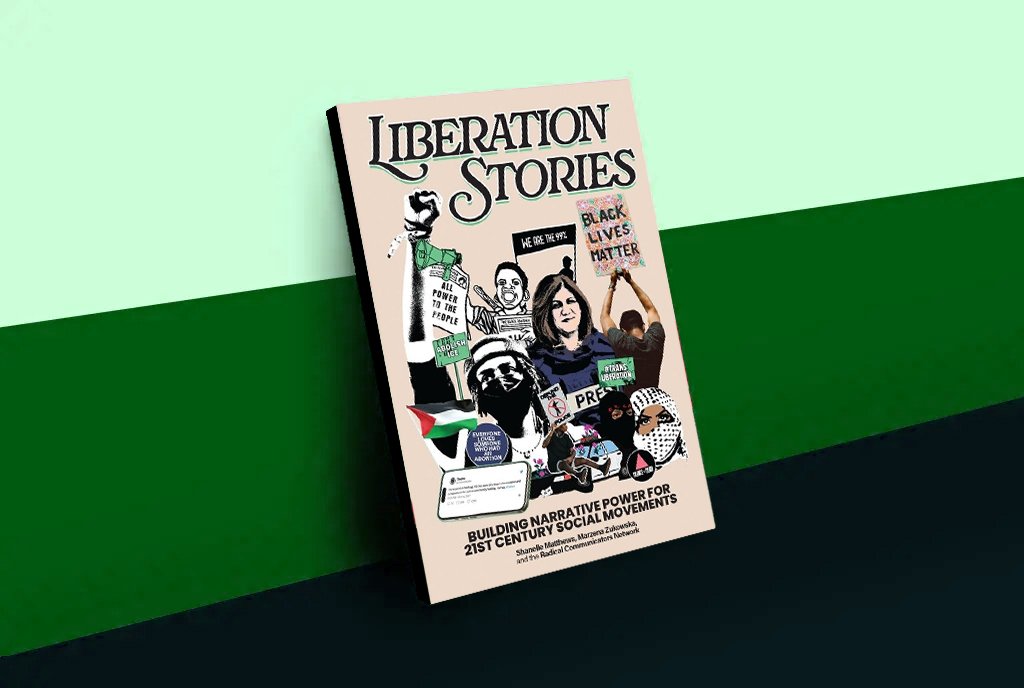
As early as 1977, an Exxon scientist was one of the first to scientifically model the disastrous impacts of human-caused climate change. In that moment, Exxon had a choice. They could have been part of the solution. They knew the science, they could see where we were going, and they had the power to make a difference. Instead, Exxon invested millions of dollars in climate-skeptic propaganda that continues to stymie climate justice progress to this day.
Many are not surprised by this because corporations are legally required to prioritize profit above everything else. It’s normal, unremarkable—a legal fiction we have made fact.
But what if we questioned this fact and made it fiction again? Would not our society and our world be better off if we were not dominated by these incredibly powerful for-profit corporate entities that are motivated solely by greed?
A Risk Reduction Tool Gone Awry
The for-profit corporation was initially formed to allow for risky investment, with liability limited to the amount invested. As Tyler Halloran, an associate at the law firm Latham & Watkins, wrote for the Fordham Journal of Corporate & Financial Law, the corporation is intended to “facilitate large-scale, risk-intensive endeavors that would be impossible for individuals or governments to achieve alone.”
Would not our society and our world be better off if we were not dominated by…powerful for-profit corporate entities?
But of course, there is, as Halloran acknowledges, the “opportunity for abuse of the corporate form.” Over 20 years ago, the award-winning documentary The Corporation detailed how if a corporation is considered a person—as the 1886 Santa Clara County v. Southern Pacific Railroad Co. Supreme Court decision says it is—it would be diagnosed as a psychopath. As one observer noted, this is because of such common corporate behaviors as “pathological lying, lack of empathy, irresponsibility, or lack of remorse and guilt.” And yet the corporation remains the dominant institution of our day.
Corporations blithely avoid taking responsibility for “externalities,” such as paying taxes for the roads that deliver their goods or the public utilities that power their data centers. This outsourcing of risk has its logical culmination in our current reality, where a handful of mega-corporations are responsible for the lion’s share of human-made climate change. Our communities—particularly low-income communities that are disproportionately BIPOC—shoulder these risks instead.
The Problem of Elite Capture
Olúfẹ́mi O. Táíwò, a philosopher at Georgetown University, coined the term “elite capture” to succinctly convey what happens when a small group of rich people have all the power: The focus narrows on what elites see as the problems and solutions, severely limiting what’s possible. We are at a point of extreme elite capture, where the US wealth divide has grown exponentially.
Today, a record 813 Americans are billionaires—a product of our corporate system of wealth generation. How much is a billion dollars? It is an amount that is incredibly hard to imagine. Consider a person who has a billion dollars at birth. That person could live to be 100, spend $25,000 every day of their life, and earn no income or interest during those 100 years—and still have millions of dollars left.
Even if billionaires did nothing but sit on a beach all day, we would struggle to sustain the rest of the world because of the scarcity manufactured by their hoarding. But it’s worse than that: In our system of elite capture, billionaires are directly and actively impeding the building of a more just and equitable society.
Everywhere we look, there’s ample evidence of the harm caused by elite capture. In the political arena, elite capture looks like controlling the political agenda so that universal healthcare remains off limits, even though 62 percent surveyed respondents of a 2024 Gallup poll said that they believe that it is the government’s responsibility to ensure that all Americans have healthcare coverage.
Elite capture looks like the United States being deemed by international observers a non-democracy—rapidly spiraling toward authoritarianism. Elite capture looks like the scarcity politics of firing thousands of civil servants in the name of “efficiency,” despite the pay of the entire federal workforce comprising a mere 4.3 percent of the federal budget.
We should be moving quickly to curtail corporate power; instead our nation continues to cede more power to the billionaire class.
Sign up for our free newsletters
Subscribe to NPQ's newsletters to have our top stories delivered directly to your inbox.
By signing up, you agree to our privacy policy and terms of use, and to receive messages from NPQ and our partners.
At this time of climate crisis and democratic decline, we should be moving quickly to curtail corporate power; instead, our nation continues to cede more power to the billionaire class. And government regulation has proven increasingly inadequate.
As john a. powell and Stephen Menendian of the Othering & Belonging Institute at the University of California, Berkeley, wrote:
We find that the growth of corporations has actively harmed the private sphere, taking space from private citizens and small businesses as well as our collective pursuit of social justice and civil rights by reducing the size of the public sphere, which holds the main infrastructure to enforce laws and promote the public good.…Our point is not that corporations will always use their excessive prerogative for harm, but that excessive prerogative itself is a structural distortion.
We Can Walk a Different Path
Not only is another way possible, but a number of possible alternatives already exist. In the same way that democracy is better than a dictatorship, there are many better alternative business formations. Here are a few:
- B Corporations: With a B Corporation (B Corp), owners can still earn profits, but the amount of profit extracted must be consistent with environmental, social, and governance bottom lines that are certified by a third party. Bookshop.org, for example, is a B Corp online book retailer that sends 80 percent of its profits to brick-and-mortar independent bookstores. Across the globe, there are more than 8,000 certified B Corps that employ over 750,000 workers.
- Nonprofits: Nonprofits are businesses that generate over $1 trillion in earned income a year. Nonprofits employ an estimated 12.8 million people—nearly 10 percent of the total US private sector employment. Since nonprofits are expected to prioritize the communities they serve and mission, above all else, they are not warped by the desire to serve shareholders. We can see that impact everywhere. For example, nonprofit nursing homes have been found to have better quality of care on average than for-profit nursing homes.
- Cooperatives: Co-ops come in many forms, including producer-owned co-ops (think Organic Valley), purchasing co-ops (such as Ace Hardware), consumer co-ops (like credit unions and most food co-ops), and worker-owner co-ops. For nearly 70 years, Mondragón, a network of co-ops based in the Basque Country region of Spain, has used a worker-owned cooperative structure to run a huge array of successful businesses, employing 70,000 people, with annual revenues in 2022 of nearly $12 billion (over €10,6 billion).
We find ourselves on the precipice of another recession, an event that in the past has resulted in massive layoffs, with significant negative long-term effects, including reduced earnings, diminished health, and even decreased life expectancy for those who experience long-term unemployment.
By planting seeds for the world that we want to see, we can shift the scope of what’s possible.
Mondragón offers us a different picture of how the story could go. During the Great Recession, leaders at Mondragón avoided layoffs by doing across-the-board salary cuts of 5 to 10 percent, and dipping into their reserves. And when they discovered it was not possible to continue running one of their manufacturing businesses, they put people first, providing unemployment benefits for up to two years and finding jobs for almost all the members who had been laid off in their other co-ops. What if this were the norm for most companies?
In fact, a recent study found that if all private firms became 30 percent employee-owned, the resulting distribution of wealth would be life-changing for 90 percent of the US population, transforming the dire landscape of wealth inequality that we face today.
What Can We Do Now?
In the short term, let’s keep reminding each other that the corporate-dominated world in which we live is not normal. Let’s open up the Overton Window by imagining a world where solely-for-profit corporations don’t exist. Let’s bring it up at the dinner table and ask our communities: What makes a corporation worth existing?
By planting seeds for the world that we want to see, we can shift the scope of what’s possible. We can share this article, start conversations, knowing that each small action does make a difference, just like each drop of water plays a crucial role when a wave comes crashing down.
At the individual level, we can wield our consumer power by making conscious choices to spend money and attention at more ethical companies. There are alternatives for everything around you, like encrypted non-US-based tech solutions and local farmers’ hubs, where you can order your entire grocery list online and trust that every dollar you spend is going to local producers.
But in the long term, it is vital to change the terms of the debate. Let’s root out elite capture at the source by no longer treating corporations like people. And let’s deepen our efforts to organize and build a better world by electing movement-aligned leaders who can help make that dream a reality.
As we dream into futures with universal basic income and universal healthcare, let’s also dream into a world where the concept of corporations focused solely on shareholder profit is a quaint artifact of the past.










